At this moment we are still extremely busy imagining that the lockdown will end, the restrictions on weddings and gatherings will ease and our appetite for beauty and celebration will return. It would be tough to predict the new landscape of the wedding fashion but all we can assure for now is that the new wedding wear would be more classic but, hey, remember your nuptials are just yours. They can be as unique as you want to make them, and this season is no different. What is different is however the new set of trends couples may want to incorporate into their special day, being more conscious about the footprint they leave with their wedding, feeding a fresh trend in the bridal industry: “the minimony” .i.e., with the gathering of not more than fifty guests, the weddings and ceremonies have taken a back seat for now with sustainability as the driver.
From pearl and crystal-embellished beauties that ooze elegance and romantic vibes to all-traditional effortless looks, we have seen almost all of the varied styles but weddings this season would no longer be about glitz and bling, the brides want to wear clothes which are breathable, light-weight and sophisticated, that’s why they are opting for fabrics such as mul, muga, summer silk, tussar or even regenerated fabrics for the easy-breezy vibe, welcoming the return of the handicrafts with the silhouettes that can adapt ever-changing versatile trends. Rewinding or inheriting the sarees from our mothers and grandmothers and recycling them to create trousseau pieces is one of the aspects of sustainability, keeping the traditions on-going and the weaves alive for generations holding onto the emotional regards. The intimate weddings would surely allow us to take things up with simplicity in a contemporary style, not going bold with either outfit, makeup, or jewellery. The ethnic yet ravishing look can be achieved if we go simple and moderate paired with classic jewellery and OTT make-up.
We usually love seeing the new trends that determine the photos of the weddings, even when we are not engaged we take pleasure in pouring over the arrangements. For quite some time now, weddings have been following the design sensibility that makes them well-photographed, now fashion too has to be ready for the makeover especially as the weddings are going micro. The couples are not just keeping up with the styles and colours but are fulfilling their responsibilities towards nature too with the environment on the top of their minds, concentrating on every detail, not just bridal sets but from food to decoration, focusing on the things that matter and celebrating it in a meaningful, personal way.
Tag: indiancontemporary
May

Apr
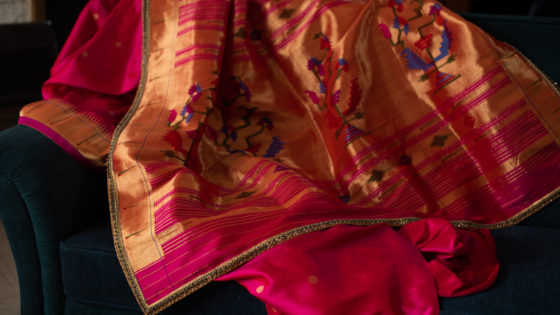
Like a beautiful crystal, found naturally in an ore, Roop is the unpolished essence of change, a restoration of generational heirlooms. Like her grandmother before her, Roop is the complexity of youth woven in the same Banarsi saree, in the simplicity of its form.

Priyanka Raajiv endeavors to intertwine the threads of this connection that transcends time and weave a story within traditional handloom fabric. A parallel softness lies in the narrative of restoration: it is done carefully with the expert skill of artisans who have learned the craft from their grandparents.
The Indian fashion designer began imbibing upcycling from day 1 into the brand philosophy and gave it a signature touch. The modern woman yearns for a continuation of intuitively structured pieces while metamorphosis takes place with millennial sensibilities. Bringing about this balance of perspective in a saree or a lehenga is intricate work, taking minute details to give the antiquity an artistic finesse.

Taking a 100-year-old Paithani saree or a 30-year-old kurta that is worn out and adorning it to create eloquent pieces of urban shade is a skill that revolves around the fourth R of sustainability- repurpose. A grandmother or a mother-in-law cherishes the memories tied into the loom of each saree, each lehenga that they have doned as a kaleidoscopic shrine of their life.

To pass this on, Priyanka Raajiv consults her clients with a honed knowledge of silhouettes and fabrics, writing biographies into a restoration, like a family repository hidden in its essence. The soul of this process lies in the translation of retaining the exclusivity of a piece while using antique zardozi, sequins, and embroidery to reveal the deliberate rarity of the original fabric.
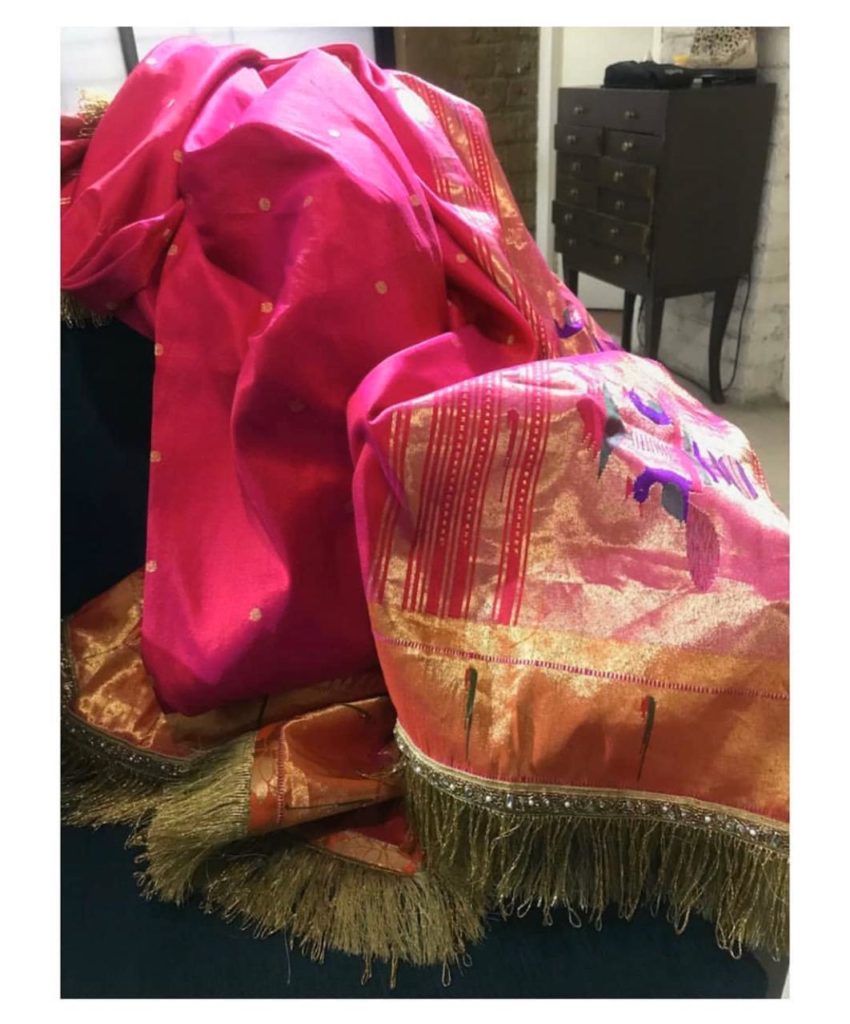
Roop has been an essential part of Priyanka Raajiv label since it’s conception, curated with an eco-conscious mindset, storytelling within a garment’s unrestricted flow: a tale of transformation.
Jan
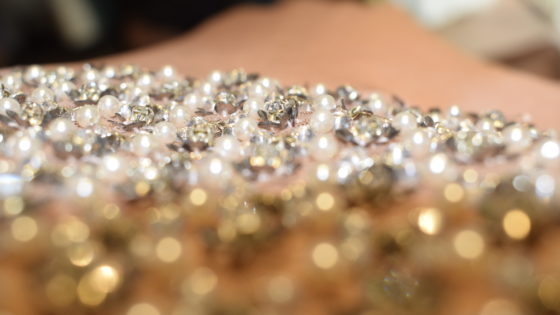
Within the boundaries of Indian ensembles, adding her own vivid touch, Arsheen Sabherwal defines her eponymous label with a sparkle of creative intellect. Poised over the balance of silhouette and color palette, the ensembles are a resonance of Indian luxury wear with a modern spin.

Through the sheer flow, the detailed work sifts through sequins, embroidery, and mirrorwork to bring a glaze to a simple fabric. Handpicked fabrics wrap around like a breezy conversation, with the casual ease of a long-standing appreciation.
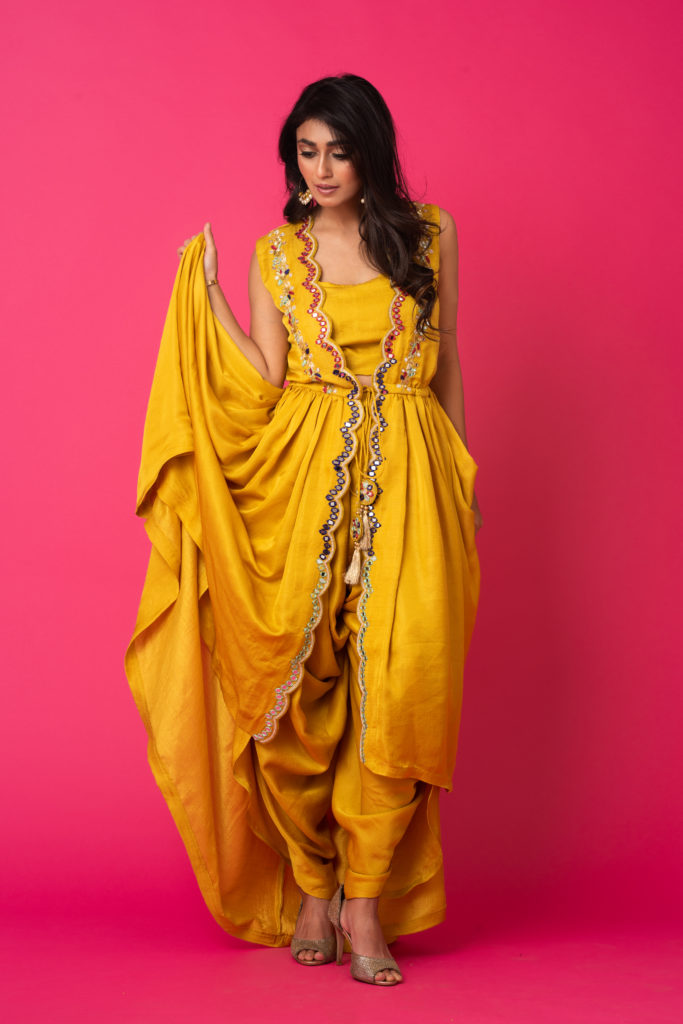
The unique aesthetic seeps in, enhancing the occasion, and making the outfit a show-stopper for the festive season. The handcrafted designs are deliberately interactive, versatile in their movement, and eye-catching in the structure.

The architecture of the ensembles is a Zaha Hadid reflection, with curves and twists, a meticulously crafted grandeur. Framed in a glamorous adaption and creation, Arsheen Sabherwal refines luxury with a gold plated algorithm, designing the essence of Indian royalty.

A glimmer of Arsheen Sabherwal introduces the label as a joyous celebration with a deeper significance behind the scenes.
Jan

Once framed as the dying art of India, hand block printing has recently gone through a renaissance period, making it to the haute couture boutiques. It is gaining popularity through the fusion of the detailed symmetry of yesteryears and the silhouettes of urban chic ensembles.

At Navya, the past and the future are threaded together; Indian culture edging onto western styles, flourishing in the essence of individuality. Amita Adlakha, the founder of Navya, believes that on Chanderi silk and pure cotton, the added hand embellishments of sequins and beads make the artisans valued work stand out in synchronization with the hand-printed work.
Navya as a brand, endeavors to adorn the hues of Indian artistry, to gather the handmade stories of hand block printing, imprinting them with fresh perspectives.

The recognition of an age-old craft gives the admirer a bright outlook, a better understanding of where this evergreen art comes from.
A collaboration of the old with the new is what Navya stands for. ‘Navya’, a word for this nouvelle mode, suits the brand perfectly as it embodies the technique which has it’s rooted in the salt marshes of Kutch, adopting it on bold and modern silhouettes of today.
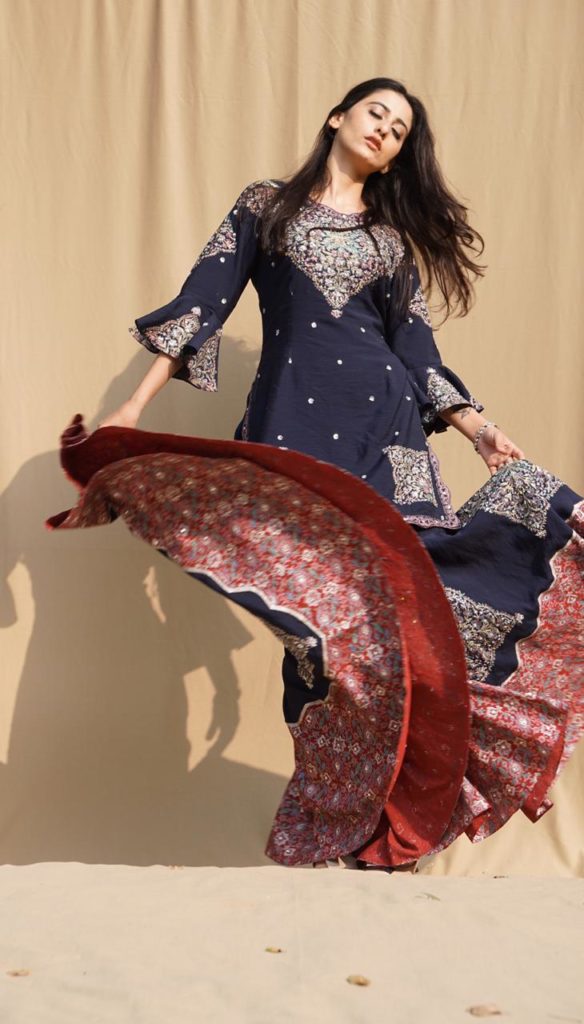
Dipped in ink of indigo and iron blend, this printing showcases poetic equilibrium. Using an incredible variety in a single form, their handcrafted design placements create a symphony of lightly layered prints and dark block imprints.

Bringing back to life local Rajasthani craft, Navya’s design philosophy suggests a vibrant outlook to a classic style.